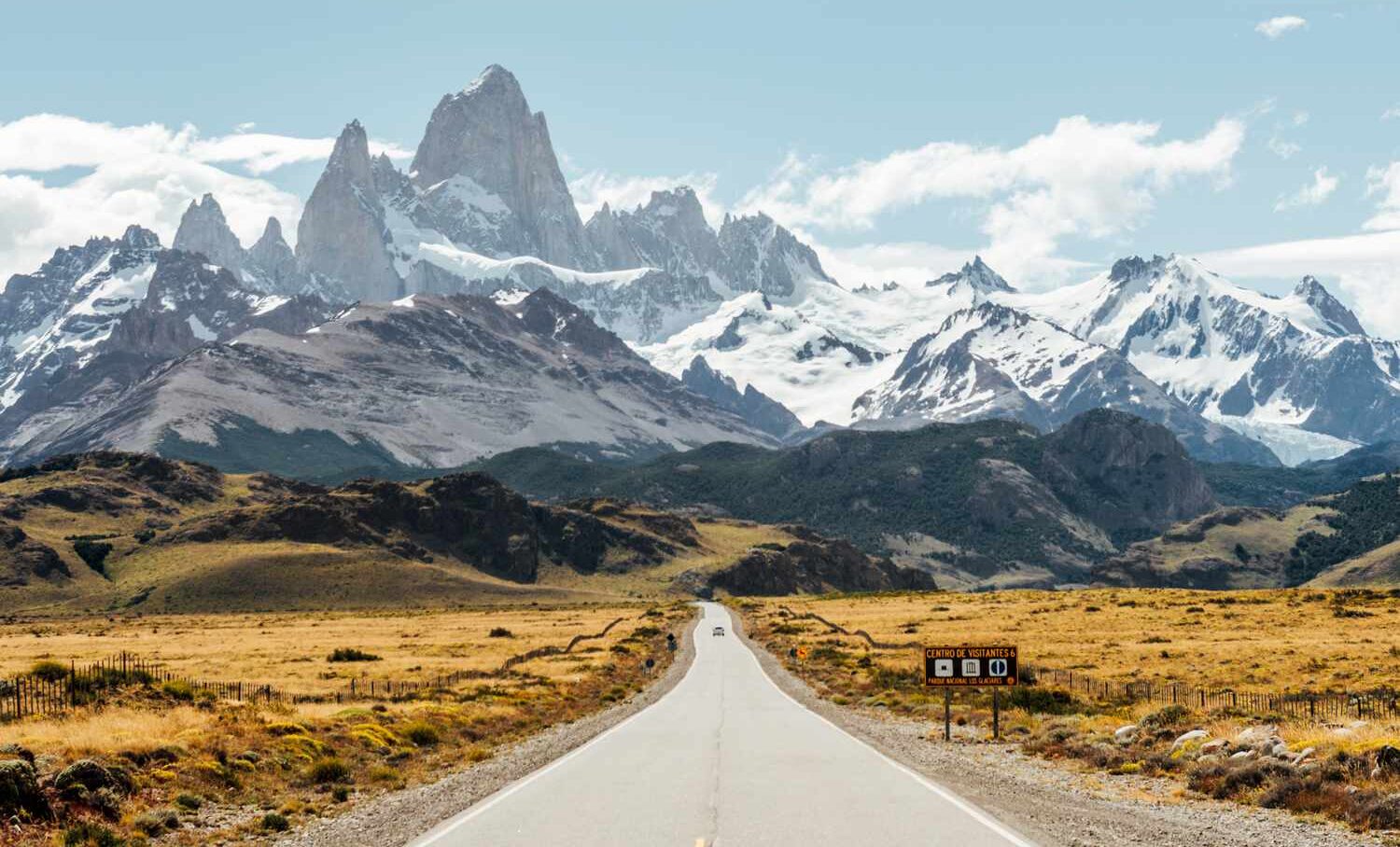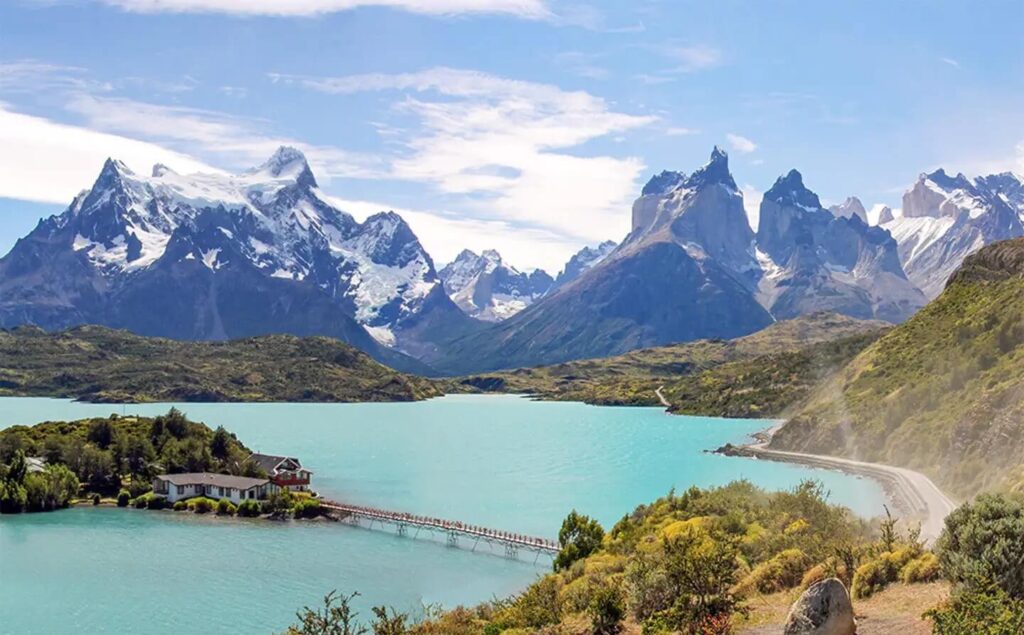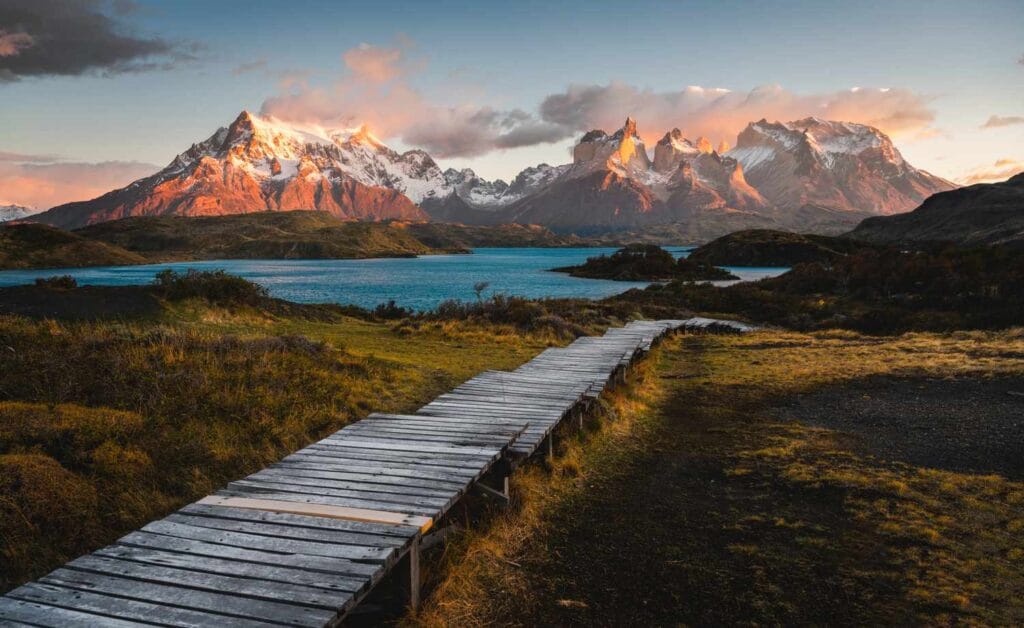If you are dreaming of a journey that combines unspoiled nature, wild landscapes, and endless adventure, then this Patagonia travel guide is exactly what you need. Stretching across the southern regions of Chile and Argentina, Patagonia is one of the last true wilderness destinations on Earth.
With its majestic glaciers, turquoise lakes, towering granite peaks, and sweeping plains, this remote region attracts travelers from all over the world. Whether you are a solo explorer, nature photographer, adventure seeker, or passionate backpacker, Patagonia offers a life-changing travel experience.
From the legendary granite towers of Torres del Paine to the icy wonderland of Perito Moreno Glacier and the wind-swept city of Ushuaia known as the “End of the World” this land is filled with extraordinary beauty. Traveling through Patagonia is not just a physical journey; it is also an emotional one.
The vast landscapes inspire a deep sense of freedom and connection with nature. This Patagonia travel guide will help you discover the best routes, local highlights, practical travel tips, and essential planning advice to make your trip unforgettable.
In this guide, you’ll learn about the top natural attractions, how to travel within Patagonia, the best accommodations for every budget, outdoor adventure options, and how to prepare for Patagonia’s unpredictable weather.
If you’re ready to explore rugged beauty, serene wilderness, and thrilling adventures, let’s begin our journey with this complete Patagonia travel guide.
Patagonia Travel Guide: Top Natural Wonders And Scenic Routes
No Patagonia travel guide would be complete without exploring its breathtaking natural landmarks. When people think of Patagonia, they imagine dramatic peaks, massive glaciers, and endless open spaces and that’s exactly what you’ll find.
One of the most iconic destinations in Patagonia is Torres del Paine National Park in Chile. Famous for its three granite towers that rise dramatically above the Patagonian steppe, this park offers some of the most stunning panoramic views in the world.
From sweeping valleys to emerald lakes like Lake Pehoé, every step in this park feels like walking through a landscape painting. On the Argentine side, Los Glaciares National Park is another must-see.
Here you’ll find the world-renowned Perito Moreno Glacier, a massive wall of ice that stretches 30 kilometers long. Unlike most glaciers, Perito Moreno is still advancing, and visitors can witness giant ice blocks crashing into the turquoise waters below a breathtaking natural spectacle.
Another highlight of any Patagonia travel guide is the picturesque village of El Chaltén, known as the trekking capital of Argentina. Surrounded by rugged peaks like Mount Fitz Roy and Cerro Torre, the area is perfect for both casual hikers and seasoned mountaineers.
For road trip lovers, the legendary Carretera Austral in Chile and Ruta 40 in Argentina offer scenic drives through remote landscapes, crossing mountains, valleys, fjords, and pristine forests. These routes showcase the true wild spirit of Patagonia.
Exploring these natural wonders is the heart of any Patagonia travel guide, offering lifelong memories and awe-inspiring encounters with untouched nature.
Accommodation And Transportation Options In Patagonia
Travel logistics are a key part of this Patagonia travel guide, as the region’s vast distances and remote locations require careful planning. Fortunately, Patagonia offers options for every budget, from luxury wilderness lodges to affordable hostels and campgrounds.
In major gateway towns like El Calafate, Ushuaia, Puerto Natales, and El Chaltén, travelers can find a wide range of accommodations. Luxury hotels such as Explora Patagonia or EOLO Lodge provide comfort with panoramic views, while backpackers often choose budget-friendly hostels like America del Sur or Hospedaje Nancy.
For nature enthusiasts, camping inside national parks is a fantastic way to connect with the land just make sure to reserve your campsite in advance. Getting around Patagonia can be challenging because of long distances between destinations.
The most efficient way to travel is by domestic flights, especially when covering large distances from Buenos Aires or Santiago to cities like El Calafate or Punta Arenas. For regional travel, long-distance buses are reliable and commonly used.
They offer comfortable seating, overnight routes, and scenic views along the way. Another great option for ultimate freedom is car rental. A 4×4 vehicle is recommended for off-road driving and exploring lesser-known gems off the tourist map.
Ferries are also used, especially in Chilean Patagonia, where fjords and waterways connect remote towns. The Navimag ferry, for example, offers a unique travel experience between Puerto Montt and Puerto Natales.
With smart planning, transportation becomes part of the adventure in this Patagonia travel guide, giving travelers opportunities to explore at their own pace.
Patagonia Travel Guide: Hiking And Adventure Activities
Adventure is at the core of every Patagonia travel guide. This region is a paradise for outdoor enthusiasts, offering world-class trekking, climbing, kayaking, and wildlife exploration.
For hikers, the most iconic trail is the W Trek in Torres del Paine. This 4–5 day trail takes you through forests, past glaciers, across rivers, and up to the base of the granite towers. For those seeking a greater challenge, the O Circuit offers a full 8–9 day adventure around the entire park.
In Argentina, El Chaltén is filled with incredible day hikes like Laguna Capri, Laguna Torre, and Laguna de los Tres one of the best viewpoints of Mount Fitz Roy. These trails cater to all levels, from easy walks to demanding alpine routes.
Beyond hiking, this Patagonia travel guide features other adrenaline-filled activities. In El Calafate, you can go ice trekking on Perito Moreno Glacier, walking on ancient blue ice with crampons. In Bariloche, try mountain biking, kayaking on Nahuel Huapi Lake, or winter skiing at Cerro Catedral.
Wildlife lovers can head to Peninsula Valdés to spot whales, sea lions, elephant seals, and penguins in their natural habitat. Meanwhile, sea kayaking in the Beagle Channel or horseback riding across Patagonian ranches (estancias) offer unforgettable cultural and scenic adventures.
No matter your travel style, adventure awaits at every corner of this Patagonia travel guide.
Climate And Packing Tips Before Traveling To Patagonia
One of the most important parts of any Patagonia travel guide is understanding the weather because Patagonia is famous for its unpredictable climate. Travelers often joke that you can experience all four seasons in one day, and it’s true!
Patagonia is known for its strong winds, especially between November and February. Even in summer, temperatures can drop suddenly, and rain showers are common. Winter (June–August) brings snow to most areas and freezing temperatures, especially in mountainous regions.
Packing for Patagonia requires careful preparation. Here is a must-have list for this Patagonia travel guide:
Waterproof and windproof jacket
Thermal base layers
Fleece or merino wool mid-layer
Quick-dry trekking pants
Warm hat, gloves, and neck gaiter
Hiking boots with good ankle support
Refillable water bottle
Sunscreen and sunglasses (UV is strong even in cold weather)
Layering your clothing is essential so you can adapt to sudden weather changes. Don’t forget waterproof covers for your backpack and electronics, as rain can appear anytime.
Finally, pack light but smart. Many Patagonia travel guide experts recommend bringing a sturdy backpack instead of a suitcase especially if you plan to hike or move between remote areas.
With the right gear, you’ll be ready to explore Patagonia comfortably and safely.
Patagonia Travel Guide: Budget Planning And Travel Tips
Let’s wrap up this Patagonia travel guide with essential travel and budget planning tips. Patagonia is known for being more expensive than other South American destinations, but smart preparation can help you manage your costs effectively.
Here’s a breakdown of typical daily expenses (approximate):
Budget travelers: $50–$80/day
Mid-range travelers: $120–$200/day
Luxury travelers: $300+/day
To save money, travel during the shoulder seasons (October–November or March–April). Prices drop, crowds are smaller, and the weather is still good for hiking. Booking flights and accommodations early also helps reduce costs.
Food can be pricey inside national parks, so stock up on snacks in major towns like El Calafate or Puerto Natales before starting your hikes. Cooking in hostel kitchens is another great way to save money. Travel insurance is a must due to the region’s remote nature and adventure activities.
Carry both cash and a travel card since not all small towns accept credit cards. Most importantly, book transportation ahead of time especially buses and ferries as they often sell out during peak season.
This Patagonia travel guide is your key to unlocking one of the most awe-inspiring travel experiences on Earth. With thoughtful planning, your Patagonia adventure will be unforgettable.
See you in the next post,
Anil UZUN


